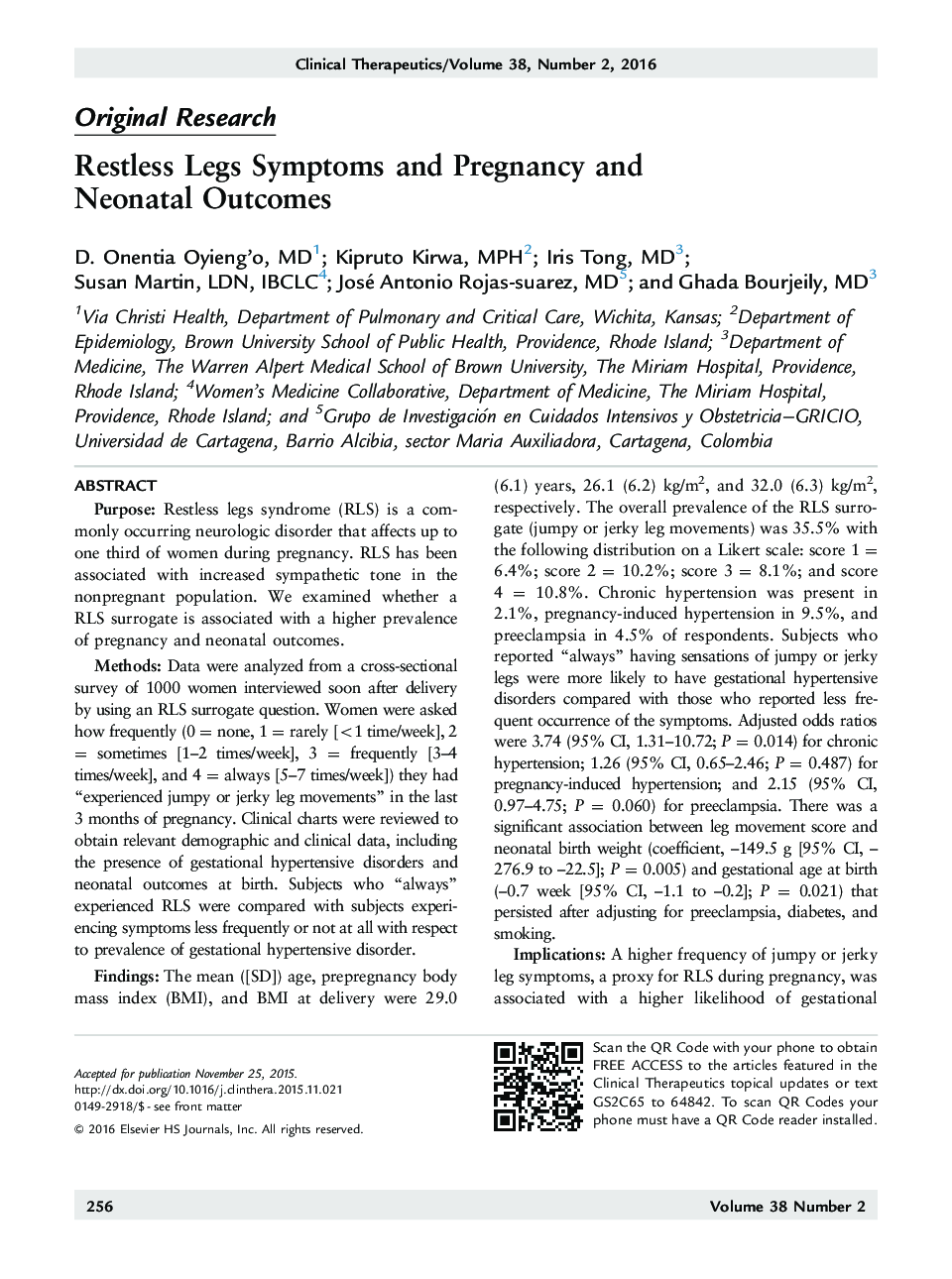| کد مقاله | کد نشریه | سال انتشار | مقاله انگلیسی | نسخه تمام متن |
|---|---|---|---|---|
| 5824559 | 1119874 | 2016 | 9 صفحه PDF | دانلود رایگان |
PurposeRestless legs syndrome (RLS) is a commonly occurring neurologic disorder that affects up to one third of women during pregnancy. RLS has been associated with increased sympathetic tone in the nonpregnant population. We examined whether a RLS surrogate is associated with a higher prevalence of pregnancy and neonatal outcomes.MethodsData were analyzed from a cross-sectional survey of 1000 women interviewed soon after delivery by using an RLS surrogate question. Women were asked how frequently (0 = none, 1 = rarely [<1 time/week], 2 = sometimes [1-2 times/week], 3 = frequently [3-4 times/week], and 4 = always [5-7 times/week]) they had “experienced jumpy or jerky leg movements” in the last 3 months of pregnancy. Clinical charts were reviewed to obtain relevant demographic and clinical data, including the presence of gestational hypertensive disorders and neonatal outcomes at birth. Subjects who “always” experienced RLS were compared with subjects experiencing symptoms less frequently or not at all with respect to prevalence of gestational hypertensive disorder.FindingsThe mean ([SD]) age, prepregnancy body mass index (BMI), and BMI at delivery were 29.0 (6.1) years, 26.1 (6.2) kg/m2, and 32.0 (6.3) kg/m2, respectively. The overall prevalence of the RLS surrogate (jumpy or jerky leg movements) was 35.5% with the following distribution on a Likert scale: score 1 = 6.4%; score 2 = 10.2%; score 3 = 8.1%; and score 4 = 10.8%. Chronic hypertension was present in 2.1%, pregnancy-induced hypertension in 9.5%, and preeclampsia in 4.5% of respondents. Subjects who reported “always” having sensations of jumpy or jerky legs were more likely to have gestational hypertensive disorders compared with those who reported less frequent occurrence of the symptoms. Adjusted odds ratios were 3.74 (95% CI, 1.31-10.72; P = 0.014) for chronic hypertension; 1.26 (95% CI, 0.65-2.46; P = 0.487) for pregnancy-induced hypertension; and 2.15 (95% CI, 0.97-4.75; P = 0.060) for preeclampsia. There was a significant association between leg movement score and neonatal birth weight (coefficient, -149.5 g [95% CI, -276.9 to -22.5]; P = 0.005) and gestational age at birth (-0.7 week [95% CI, -1.1 to -0.2]; P = 0.021) that persisted after adjusting for preeclampsia, diabetes, and smoking.ImplicationsA higher frequency of jumpy or jerky leg symptoms, a proxy for RLS during pregnancy, was associated with a higher likelihood of gestational hypertensive disorders and neonatal outcomes such as gestational age at birth and birth weight. These findings may affect RLS treatment decisions during pregnancy.
Journal: Clinical Therapeutics - Volume 38, Issue 2, February 2016, Pages 256-264
